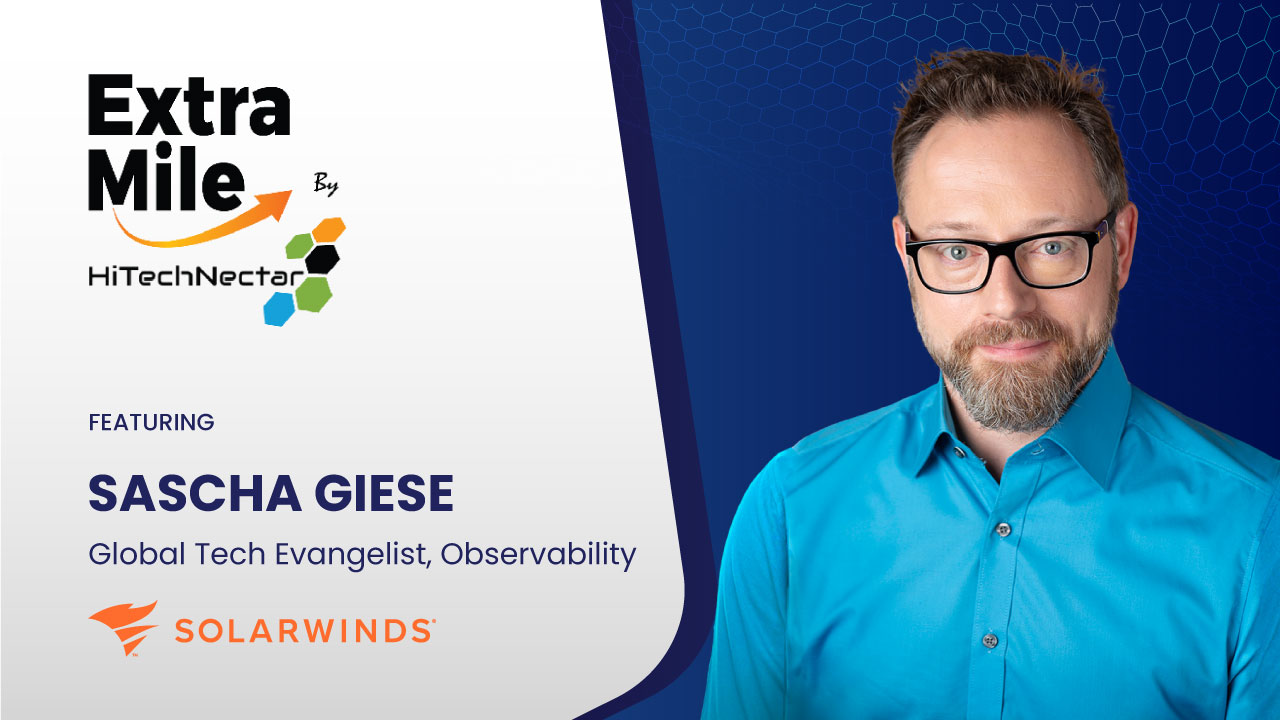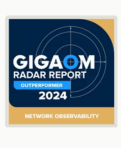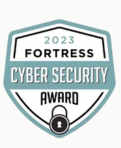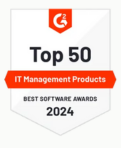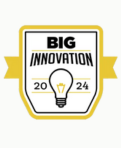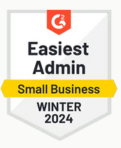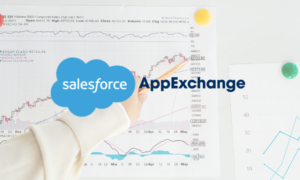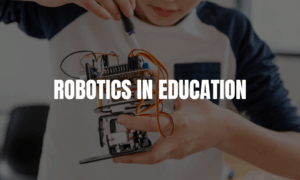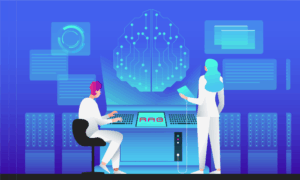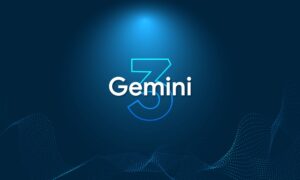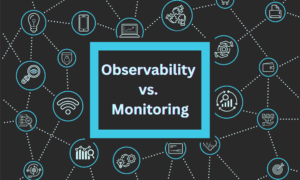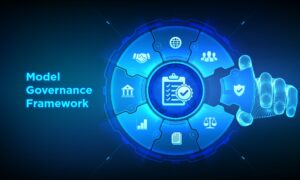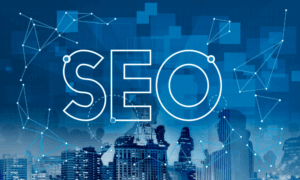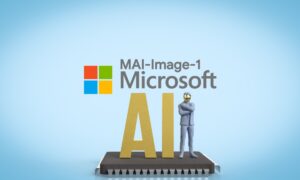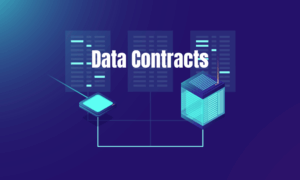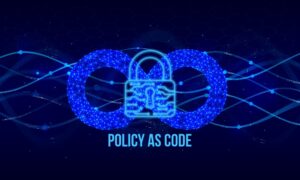Host: Hello everyone, welcome back to another episode of extra mile by HiTechNectar, an interview series that bridges the gap between industry leaders and enthusiasts. I am your host Sayali and we’re here to discuss the latest innovations, tech trends, marketing practices, expert insights and a lot more.
In this episode, we’re pleased to introduce Mr. Sascha Giese, Global Tech Evangelist for Observability of the leading software development company, SolarWinds. With his extensive experience and passion for innovation, Sascha has been involved in guiding organizations through the complexities of IT infrastructure management. Welcome Mr. Giese, we’re so glad to have you here.
Sascha: Thank you, thanks for having me.
Host: So Sascha, you started as a Senior Sales Manager at SolarWinds and now you’re the Global Tech Evangelist for Observability. Can you walk us through your career journey and how it’s been so far?
Sascha: Well, it’s been very good, otherwise I wouldn’t be here. In fact, I started at SolarWinds more than 10 years ago as a sales engineer. So not a Sales Manager, Sales Engineer.
So that is a role which is half technical and half sales. It’s a very weird combination because you need to understand what you’re talking about, but you also need to understand what the customer actually needs, right? I did this for a couple of years and for maybe six years or so, I’m in this role which is called evangelist.
Previously, we were called head geeks, which I thought sounded cooler, but no one could understand what it means. So, we are now evangelists. Well, and I’m still enjoying it
It’s a great role and yeah, I can’t think of anything better right now.
Host: Amazing. Moving ahead, what are your main responsibilities as the Global Tech Evangelist and how do you collaborate with your internal team as well as the broader IT community?
Sascha: That is pretty much exactly my job. So, I work in a very small team and my two colleagues are located in the US. So, they primarily stay in the US, which gives me the opportunity to travel the rest of the world, right?
So yes, I was in Chicago last week, but usually I’m in Europe, in Africa, in the Middle East, in Singapore, in Thailand, everywhere, basically in Asia. So, what I do is I either go to those bigger conferences, think of the JITECs in Dubai, for example, or the GovWare in Singapore is another big one. And sometimes I’m on stage.
I usually try to apply with a talk. Well, sometimes you get accepted. Sometimes you don’t get accepted.
That’s just life, right? But on some of these conferences, we usually sponsor, we like a sponsorship and have our booth, which means I’m standing in the booth and talk about our products. And if a prospect wants to see a little bit more, I can show them what’s happening and what’s the problem.
So that is one thing. What makes my role so interesting because it’s global is that I can talk to people all over the world and see where the problems are similar, and actually mostly they are similar, or where they are a little bit more regional, maybe. And if the problem is regional, it is actually mostly based on regulations.
So, for example, in specific countries, you can’t use clouds because they are outside and you don’t have the control of the data. And obviously, I get a lot of feedback from existing customers. Most people are very happy and some people come like, hey, I would prefer this button to be a little bit more to the right-hand side, you know, these people.
And that is perfectly fine feedback too. I take all this feedback and bring it back to our product team. And they have very difficult tasks to make our products appealing for the whole world.
And not just for a specific American audience, just to say.
Host: That’s very interesting. So, going forward, what are the biggest trends and challenges organizations face in managing IT and observability in 2024? What steps should they take to address these issues?
Sascha: So, I think one of the biggest issues which we still have and which is increasing is the complexity of IT. If you look back a couple of years back, IT used to support the business, but nowadays IT runs the business. You can’t imagine any organization without IT.
And with the requirements of the business towards IT, the problems to deliver those requirements are getting bigger and bigger and bigger. Just a simple example. In the past, we had a three-tier application model.
We had a database in the background. We had an application somewhere. And the client, which we used on our desktops, those applications still exist.
But the majority today is hyperscaler, decentralized. We have a little bit in AWS. We have a little bit in Azure, a couple of clients in between.
And the situation is so dynamic and so complex, which makes it very difficult for us to understand as humans. So, we need proper technology. And the other thing, as I just mentioned, humans, this is also a huge problem.
In many organizations, you have different teams in IT. You have your network team, server admins, cloud architects, yada, yada, yada. And those teams don’t really talk to each other.
And in some organizations, these teams don’t even like each other for the very simple reason. When something breaks, it’s like, it’s your fault. It’s your fault.
It’s your fault. And we keep that actually in mind. And we try to bring these different groups together in one tool.
So, the tool will tell them which problem it is. So, there’s no finger pointing required. We are the finger, basically.
Host: So Sascha, can you tell us more about the products and services SolarWinds offers and how they help businesses manage their IT infrastructure?
Sascha: So, SolarWinds is on the market for 25 years. We are happy birthday this year, actually, 25 years. And we started as a company who focused on network monitoring.
And from this point on, we grew over the past two decades and our portfolio grew. We take other layers and other parts of infrastructure into this. And for a few years now, we have basically rebranded ourselves as an observability-focused solution or developer, whatever you want.
And well, one of the main differences is that in the world of monitoring, you collect an enormous amount of metrics and you try to make the best out of this. In observability, we use more modern technology to actually make the data useful. So, we pre-select the data.
We arrange it in a way that humans can actually understand it. And in a nutshell, we have two major products. We have actually loads of products.
We have almost 50 different products, but two major products. And those are SolarWinds observability, which exists in two versions. One is what we call self-hosted.
This is something that an organization can place wherever they need it. They can place it offline and place it in a private data center or in a public cloud. And we have SolarWinds observability for SaaS, which means, well, it’s a typical SaaS solution.
That means that the customer doesn’t have to install anything. It runs out of the cloud, but can be used to observe on-prem elements too. So those are the two basic, no, they’re not basic.
They are the two biggest offerings which we have, plus a few special things. We have loads of solutions for database observability. We have ITSM solution.
We have solutions to support the help desk to connect to remote computers and a lot more.
Host: So, as we all know, AI is on the rise. How do you see AI and automation changing the future of IT management and observability? Like what should companies do to prepare for these changes?
Sascha: The big problem, and I’m glad that you mentioned both automation and AI. The big problem is that in many businesses, there’s no clean data, which means there’s like a mass of data, but it’s almost impossible to work with this. Someone needs to qualify it and clean it.
We have a saying called garbage in, garbage out. That comes from the database world, but that applies very well to any solution that works with data and should work with data to provide some automatism or AI. So many companies who are right now in the process of deploying, let’s call it a serious AI solution.
I’m not talking about a browser with a search engine that does suggestions, right? That’s just very plain. But any serious AI-based models, there’s a lot of algorithms behind it.
They need the data to work with and they will be deployed in any organization. And there’s a couple of challenges. So first of all, how were these models trained with what kind of data?
I usually tend to compare an AI with a toddler, with a child, right? The longer you send a child to school, the smarter it gets. And the same applies to AI too.
The longer the training phase, the better the solution is. But the problem is in many organizations, time is a financial problem. So, you can’t just have it running and training and training and training.
You need to get it out of the customer, which brings us to a very risky situation. Some vendors just throw out those solutions on the market too quickly and let them ripe at the customer’s premise. Admittedly, that is not so much a problem right now, but like maybe two years ago, I was speaking to a security vendor about this problem and they asked him like, what is the typical deployment phase of your product?
Once it’s rolled out at the customer, and he said like between eight and 14 months, depending on the size of the organization. And two years ago, that was kind of acceptable. Today, it is no longer.
AI moved on so quickly and no one would put the fingers on a solution that requires a year before it’s actually to work. You need to return on investment. The other risks is, or maybe not a risk, but what happens in the future?
Is it just a set and forget system or will the model be fine-tuned, which should always be the case, right? But essentially, we need AI because we deal with so much data. We just can’t do this as humans anymore.
We need the AI to prepare the data for us to remove the noise, stuff that’s not really interesting so that we can focus on what is essential for the business and helps us to bring the business forward.
Host: Moving on, with cybersecurity constantly evolving, how does Observable help in monitoring and reducing security threats? And what role does it play in an organization’s overall security strategy?
Sascha: This is actually, so when we observe something, let’s say we observe data traffic between two different branch offices or whatever, and everything looks normal, and suddenly we see major spikes around midnight. I’m just making up a story, right? So, in the first moments when we see such an anomaly, we don’t know if this is an operational issue or if it is a security issue.
It could be both in the very first moment. So, when we see an anomaly, we need to respond fast either way, either way, right? If it’s something that’s broken or it’s a security problem.
The thing is, in reality, there’s no tool that will automatically forward this information to the correct team. So, in my example of a spike in utilization, it would be the network team who has to deal with this, or the security team should have a look at this. And I think we have integrated some of our security tools into our observability solution for exactly that reason.
We want to give the customer this five, 10 seconds decision-making process, which could make a big difference, right? We are not a security provider in a traditional way, so we don’t have any solutions like the other big brands, okay? But we have a scheme, we have a permission-based system, and that helps the IT professional to get faster to this point, like, oh, this is a serious situation.
And they can involve the response team. So yes, even if one might not think so, observability has a positive impact on security for the business as a whole, too.
Host: So, since we were speaking of cybersecurity, in 2020, SolarWinds Orion Software faced a major cybersecurity attack. So what strategies did the company adopt afterward to strengthen security and avoid similar issues in the future?
Sascha: Yeah, as I mentioned, I’m 10 years with the company, so I was with us while this happened. It was a shock. So basically, what happened is, when you look at a normal chain of development, it starts with the coder who creates code and sends this code to a machine, to a compiler that converts this code, this handwritten code, into machine-readable code.
And then it gets forwarded to a platform where customers could download it, basically. That’s simplified, but that’s how it is. And this element where the software gets compiled got compromised at SolarWinds.
So that is actually what happened. And some malware got added into our code, and we shipped it, unfortunately. It took us a while to discover this, actually.
So yeah, as this happened, we looked at this as an opportunity to not only change the way we develop software, but also basically rethought security from scratch. So we re-evaluated each single process here at SolarWinds in regards to security and tried to optimize it. But back to your question, to prevent this from happening again, we doubled and almost tripled the way we develop software.
We have one team that creates software and also creates documentation. Developers don’t like to create documentation. They just want to work.
So we have a half-automated, half-manual system. There’s a second team that will recreate the code based on the documentation. And we have now two lines for development, and the output should be absolutely equal, all the same.
I compare this when I am in the kitchen and prepare a dish. And at the same time, I create the recipe and I give you the recipe. Then you should be able to recreate it in the same way.
And the result should be equally good or bad as whatever I create in the kitchen, right? And that is kind of a concept which we apply in software development. And we actually have a third group that continuously controls that everything isn’t the way it is and a couple of other security measures.
And we call this secure by design. And as the situation improved, or as we improved the situation in 2021, I think, we shared these findings with the whole community because we were not the first that got compromised. And surely we are not the last.
There were a couple more. And we even shared this with our competitors because we are a not-so-big community of software developers. And if we find a way to prevent this from happening again, why wouldn’t we share this with other companies, right?
Of course, as you know, there’s no 100% security. But what happened in 2020 is never going to happen again at SolarWinds.
Host: Lesson learned. So, on a positive note, could you share a success story where SolarWinds observability solutions made a big impact for a customer? Any success story?
Sascha: There, yeah, I can’t give you the name of the customer, but they recently finished a migration to Azure, to Microsoft Azure. And the project took two and a half years, a long time, a long time. And they actually did it in a very professional way.
Many organizations that migrate to the cloud are not really prepared for what they do. And they try to recreate their on-prem infrastructure in the cloud, with the result that they get a bill that’s exploding and the budget is causing trouble. So, this particular customer is a customer of ours for many, many, many years.
And they used our tools to baseline their infrastructure. So, they checked what server is sending what data to what other server. So, they can better prepare the paths, the VPC connections between different cloud entities.
They used simulations for right-sizing servers. So instead of purchasing a SQL server with 512 gig in the cloud, purchasing is the wrong word, just subscribe, basically subscription. And they checked what exactly is the requirement they need.
And it was far lower than what they actually had on-prem. So, they used our solutions to prepare for the move into the cloud. And they didn’t give me a perfect number.
So, I was speaking to them. They didn’t give me a perfect number, but they saved multiple hundred thousand dollars per year in this process. But yeah, it takes a lot of planning and time to make such a huge process read in a perfect way.
I’m glad that we could help.
Host: So lastly, what are your predictions for the future of observability and IT over the next five years? And how do you see SolarWinds adapting to future challenges?
Sascha: Five years is a long time. We usually say two years. We plan ahead two years.
Well, we obviously will see more AI. We actually in our ITSM solution, it’s not observability, but one of our solutions, we meanwhile have three different AI models for different use cases, depending on who’s using it, if it’s a technician or if it’s an employee. We have our own models, which we created over time.
And we use a lot of AI in our observability solutions too. The first approach was to minimize alert noise. I don’t know if that makes sense to you.
We sometimes get too many messages. And in IT, we have to respond to each single ticket, to each single message, even if there is no real reason behind it. So, we use something that’s called a regression model to compare data with each other and spot an anomaly.
And only if something is really completely out of the ordinary, we inform the resolver group. And this is kind of the state of right now. We are in September, right?
September, 2021. What’s happening in five years? Maybe in five years, we have a system that autonomously will be able to fix issues of varying grades.
Something happens, the system understands exactly what it is and responds a lot faster than we could do as a human. And maybe the systems will be so advanced that just from reading different KPIs, which might not even that closely connected, but just from reading these KPIs, the system can see that there’s a risk that something might happen and start countermeasures before something happens. So, I think we will see a lot more development in that sector.
But we should never forget about the human element. So, I’m a strong supporter of humans working in IT. There are still active people behind all those computers and keyboards.
And the creativity of a human should not be underestimated. They will still be there in five years, even though the roles might be a little bit different.
Host: Well, thank you so much, Sascha, for sharing your valuable insights and experiences with us. It’s been a pleasure to discuss the evolution of observability and how SolarWinds is navigating the future of IT management. Thank you so much.
Sascha: Very welcome.
Host: And thank you all for tuning in. I am your host, Sayali, signing off. Join us in our next episode of Extra Mile by HiTechNectar, as we bring you another extraordinary leader to share their thoughts and experiences. So please stay tuned.
Explore Our Other Insightful Interviews:
